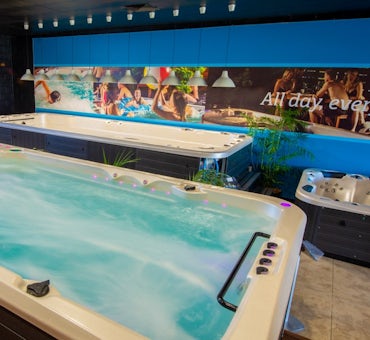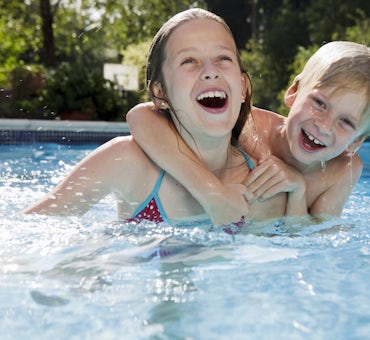Electric Outdoor heaters vs gas outdoor heaters (Pros and cons, benefits, features, more)
Using an outdoor heater can help you enjoy more days outside on your deck or patio, even on cooler days. If you’re wondering whether a gas or electric outdoor heater will work best for your needs, it’s important to understand that both offer great advantages. Read this article to learn more.

What is an outdoor electric heater?
Outdoor electric heaters, sometimes called patio heaters, or umbrella heaters, generate warmth using electricity in outdoor and indoor areas. They come in wall-mounted, flat, and tall freestanding sizes, and can also emit infrared and radiant heat.
How does an outdoor electric heater work?
Heaters that use electricity radiate heat which directly warms the people, furniture, and other objects in your space instead of wasting energy on warming the air around them. This type of heater is suitable for outdoor spaces.
What are the types of electric heaters?
Before deciding that an electric heater is what you need, it’s important to know that there are two kinds of electric heaters.
Radiant heaters
Radiant heaters use a heater element that produces heat energy when electricity flows through it. Heater elements are made from materials that have a high resistance (they are an insulator rather than a conductor of electricity). This means that the electrical energy is not able to flow easily through the material, so it generates heat energy as it faces resistance in the heater element. A common material for a heater element is a metal alloy known as Nichrome (80% nickel and 20% chromium). A radiant heater provides enough heat to ‘radiate’ directly onto humans and provide warmth without having to room up the ambient air temperature in the room.
Infrared heaters
Technically infrared heaters are a type of radiant heater, but they are different in that they generate heat energy on the infrared spectrum, which is similar to the heat energy produced by the sun. Modern infrared heater elements are typically made from carbon or ceramic material. The most efficient type of infrared electric heaters are Far Infrared (FIR) or Long-Wave Infrared Heaters. FIR heaters can operate at a lower temperature, therefore using less energy but they still generate heat on a wavelength (3 – 1000 microns) that is easily absorbed by human bodies. FIR Infrared heaters are completely safe for humans to use. The infrared radiation it produces travels through the air and heats surfaces, objects and people rather than directly heating the air.
Convection heaters
A convection heater is a type of heater that uses the movement of air or liquid to circulate heat energy. Heat is transferred from a heated surface to moving air. The natural tendency is for warmer (less dense) molecules to rise and the cooler, denser molecules to fall with gravity. While some convection heaters use natural air currents to heat the space, others use fans to accelerate the heating process. Convection heaters rely on heating up the air and are therefore less suited to outdoor applications

What are the pros and cons of electric heaters?
Now that you have a better knowledge of outdoor electric heaters and how they work, understanding their pros and cons will help you decide whether this type of outdoor heater suits your outdoor setup and lifestyle.
Pros
- They can be a safer option for families with small children as they don’t emit physical fire. Furthermore, they produce no fumes, burning elements, or gases that can be inhaled or ignited.
- They are often portable and easy to install.
- More suitable for windy spaces (like the outdoors)
- They come in various styles, shapes, and sizes allowing you to find a perfect fit for your outdoor setting.
- They help preserve natural resources and do not emit carbon dioxide into the atmosphere.
Cons
- Since most electric heaters rely on electricity to heat, they are often more expensive to run.
- Compared with gas heaters, electric heaters are slower to heat.
- Placement areas might be limited due to the need to run electrical wiring for the power source.
What is an outdoor gas heater?
An outdoor gas heater generates a warming glow that has a similar effect to a campfire. Compared with electric heaters, this type of outdoor heater is often a practical option for long-term use since electricity is more expensive than gas.
They are also easier to move around unlike electric heaters that are wired into the wall. The flame gas heaters produce can be visually striking and can provide a relaxing atmosphere to your patio or garden.
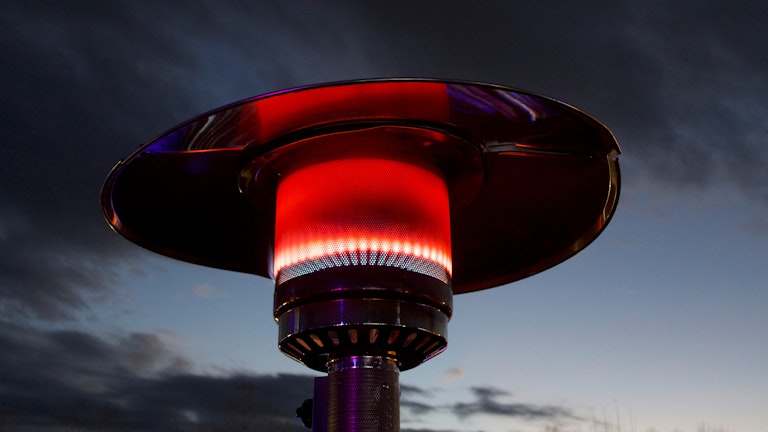
How does an outdoor gas heater work?
The way outdoor gas heaters work is very similar to camping stoves. The gas cylinder or tank is connected to the heater through a hose and uses an ignition that produces a warming flame. Gas heaters, like most gas-powered appliances, use regulators to determine how much gas is released.
There are still a few traditional outdoor gas heaters in the market that require matches to light, but most are now equipped with advanced ignition systems.
What are the pros and cons of outdoor gas heaters?
In this section, we’ll explain the pros and cons of outdoor gas heaters to help you understand them more.
Pros
- They can effectively heat up large spaces.
- They have stylish designs and produce a charming ambient glow, especially at night.
- They are highly portable.
- They can be a more economical outdoor heating option.
Cons
- Installation requires a professional technician (for plumbed-in gas lines).
- Unvented gas heaters are not suitable for enclosed spaces.
- Since these outdoor heaters use flames to heat the space, they might not be the best option for windy areas, or for families with young children.
What type of gas can you use with an outdoor gas heater?
You might wonder what type of gas is used to fuel an outdoor gas heater. Mainly, there are two types of gas you can use.
Butane gas
Unlike other types of gas, butane is naturally clean and pure. It emits less carbon monoxide allowing you to enjoy the warmth they produce without having to worry about the negative impact it may bring to the environment and to your health. Although butane gas ignites almost instantly and immediately reaches the desired temperature, propane gas produces more substantial heat.
Propane gas
One great advantage of propane gas (also known as liquid petroleum gas or LPG) is it doesn't give off an unpleasant smell when burning. This is because it's odourless and non-toxic. With its -42°C boiling temperature, they are an efficient option to heat colder outdoor spaces. LPG is highly-flammable - proper storage and usage are vital.
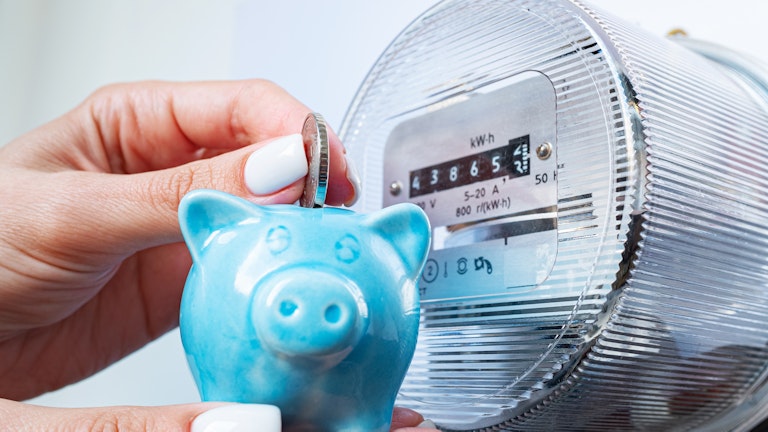
Which is cheaper to run a gas or electric outdoor heater?
The running costs of outdoor gas and electric heaters depend on the heater’s size and usage settings.
An efficient gas heater typically consumes 1kg of gas (propane/LPG/bioethanol) per 12kW output. A 12kW heater at max setting will use 1230g/h, so a standard 9kg tank should last up to 7 hours or longer if used at a lower setting. Depending on the energy retailer and location, a 9kg propane cylinder may cost around $50. If you choose to refill the tank instead of replacing them, you can save more in the long run.
The running cost of electric outdoor heaters depends on how much energy your heater requires.
The electricity rate in Australia is $0.28 per kWh on average, as a broad guideline, a 2400W Outdoor Electric Heater (2.4kW) can cost around $0.67 per hour (2.4kW x $0.28) to run.
Although electricity often costs more than gas, you can lower your running cost by choosing a high electricity-heat efficiency electric outdoor heater. Similar to gas-fueled heaters, electricity rates vary on your location.
So which of the two is cheaper to run? Most might say, gas outdoor heaters are cheaper to run. But keep in mind that the running cost is just one of the important factors to look at when deciding which type of outdoor heater best suits you. You also need to consider the visual appearance, upfront purchase price, installation, maintenance costs, and impact on the environment.
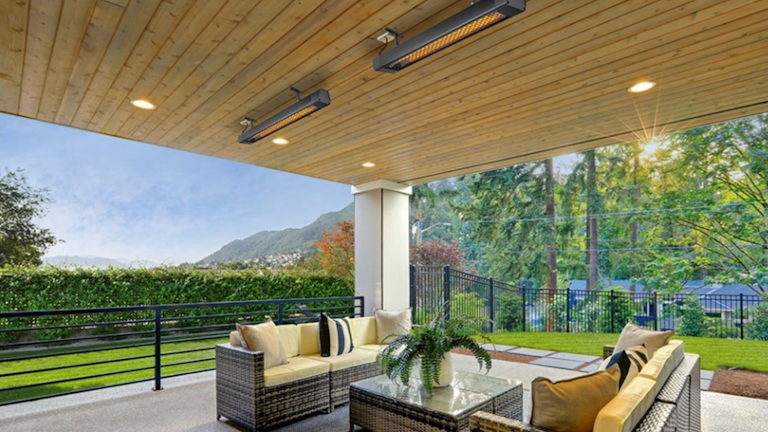
What to look for when in an outdoor heater?
Outdoor heater safety standards - Just like any appliance, the outdoor heater must conform to the appropriate CE (Conformite Europeenne) and BS (British Standards) standards to ensure safety. Electric outdoor heaters should have SAA approval for sale in Australia or New Zealand.
Heat coverage
Outdoor heaters come with different heat outputs. The coverage level is determined either by square feet or metres and sometimes by British Thermal Units (BTUs). Generally, for every square metre of your space, you will need 112w of heat energy.
If you have a room that measures 4m x 4m (16 square metres) you will need a heater that provides approx 1800w of heat energy. (16 x112) Please note that heat radius and warm-up time will depend on outdoor ambient temperature, wind chill factor and exposure.
Heat distribution
The way the heat is distributed in your space plays an important role. For example, in windier spaces, heaters that emit heat vertically may be more efficient than column-style heaters that emit heat horizontally.
Materials Used
The type of environment where you live determines which materials are best suited for your outdoor heaters. Stainless steel is a highly corrosion-resistant metal that can withstand the corrosive forces of marine and humid environments. For dry environments, steel or aluminium could be your best choice.
Power source connection
As previously mentioned, propane or gas heaters give you the flexibility to move them around more easily than heaters powered by electricity. If the area where you want the heaters installed are far from your power supply and you don’t want to pay extra for a professional technician to install electrical wiring (not to mention the materials needed), outdoor gas heaters could be your best choice.
Emitter screens
Emitter screens are often used in gas heaters. They come in different diameters and styles, some are also equipped with titling features that enable you to change the heat direction.
Adjustable thermostat
This feature allows you to easily adjust and set your ideal temperature. Most advanced heaters come with remote control for easy operation.
In Summary
In this article, we explained how electric and gas outdoor heaters work, and their key differences, including a detailed review of their pros and cons.
We also shared our thoughts on which one might be cheaper to run and enumerated the important features to look for in an outdoor heater.
Got more questions?
Talk to us on live chat, or email us your spa questions and we'll be happy to help!
